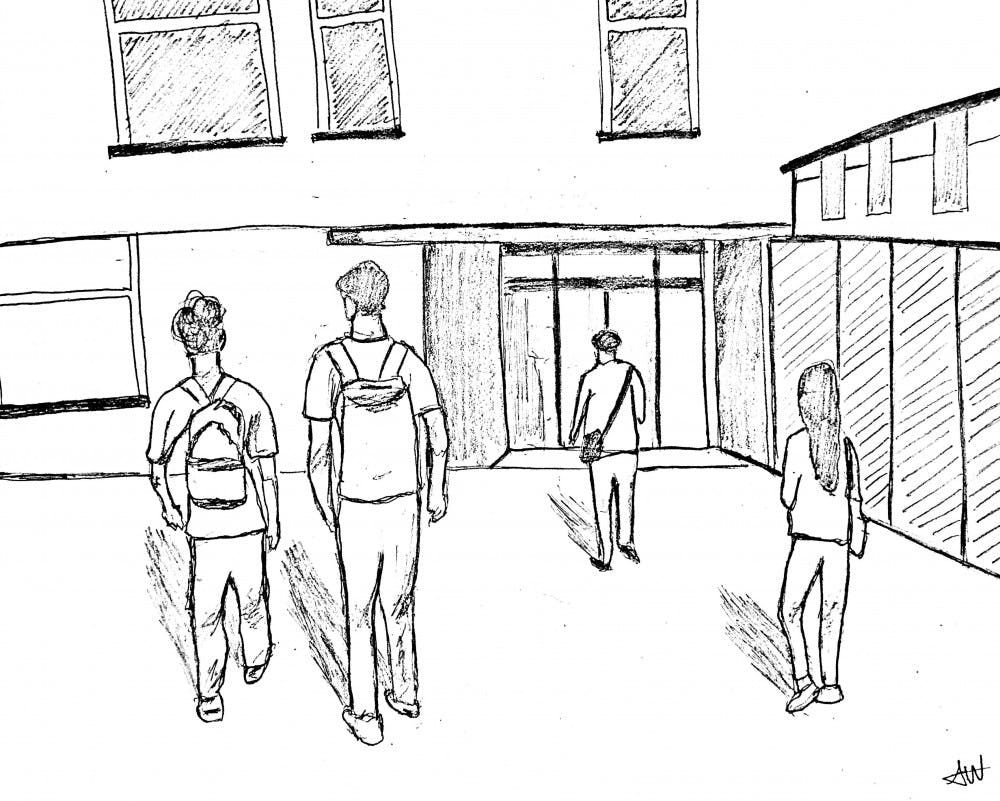Low- and middle-income high schoolers in Rhode Island public schools can now earn up to $2,000 as they prepare for college with Rhode2College, a new statewide program that aims to incentivize students to pursue higher education. Over 1,100 students will have received their acceptance letters to Rhode2College from Gov. Gina Raimondo by the end of this week, said Public Information Officer of the Rhode Island Department of Education Meghan Geoghegan.
“Rhode2College is really about … giving an added push, and sometimes that’s all it takes to get students to the next level to help them consider different possibilities for the future,” Geoghegan said.
The new initiative uses students’ PSAT scores in the 10th grade to determine the top 25 percent of students in the Free and Reduced Lunch program across the state, wrote Professor of Economics and International Affairs Justine Hastings in an email to The Herald. Her nonprofit, Research Improving People’s Lives, worked with Raimondo, the Rhode Island Department of Education, the College Board and the Chan Zuckerberg Initiative over the past two years to develop Rhode2College.
“Rhode2College is designed as a step-by-step, achievement-focused program that breaks down the process of getting to college from a large, daunting task into achievable milestones,” Hastings wrote. “Then it rewards students for achieving those milestones.”
Rhode2College scholars receive an immediate payout of about $500 in the form of a gift card when they are first admitted to the program. They can get up to $1,500 more over their junior and senior years by taking proactive steps to prepare for college. For instance, students can take free courses to study for the SAT, complete an individualized college plan and submit the Free Application for Federal Student Aid to indicate progress toward their higher education goals, Geoghegan said.
An interactive bot texts students with reminders, advice and updates about their earnings for each milestone, which could take the form of a gift card or added money to the scholars’ college savings accounts.
“Even though they’re small incentives, … it can actually make a pretty huge difference,” Geoghegan said, adding that the program’s dual approach of offering immediate and long-term payouts should be effective in keeping students on track.
While developing the project, Rhode2College’s creators drew on research in economics and behavioral science that indicates that “individualized assistance and even low-cost incentives … can have comparable results to large-scale scholarship programs,” Hastings wrote.
Chair of Education Kenneth Wong said that the initiative is aligned with the state’s “bipartisan commitment” to education and understanding of the phases of “cognitive and social development” of children.
“I’m seeing a system of student support from early childhood all the way to career and college readiness,” Wong said. “This program is situated in that whole landscape of commitment.” He added that Raimondo is now turning her focus from early childhood to high school education through initiatives such as Rhode2College and the Rhode Island Promise Scholarship, which aims to make higher education more affordable.
Wong did express concern regarding Rhode2College’s accessibility to students from Rhode Island’s urban school districts, which tend to have large immigrant and first-generation populations. Given the achievement gap that exists between English Language Learners and other students in the state, there’s a risk that low- and middle-income students in urban areas will be underrepresented in the program if they compete with native English speakers, he said.
Of the 1,150 eligible students this year, 333 students were accepted from Providence, East Providence and Woonsocket alone — with more scholars from Providence than any other school district.
Currently funded by the Chan Zuckerberg Initiative, Rhode2College could be implemented as a permanent state-funded program if it is successful in its two-year launch period, Geoghegan said. The state will be paying close attention to the number of participants enrolled in college in order to evaluate Rhode2College’s success.
“It’s an exciting time to be a high school student in Rhode Island,” Geoghegan said. “There’s a lot of opportunities available that weren’t there five years ago.”





